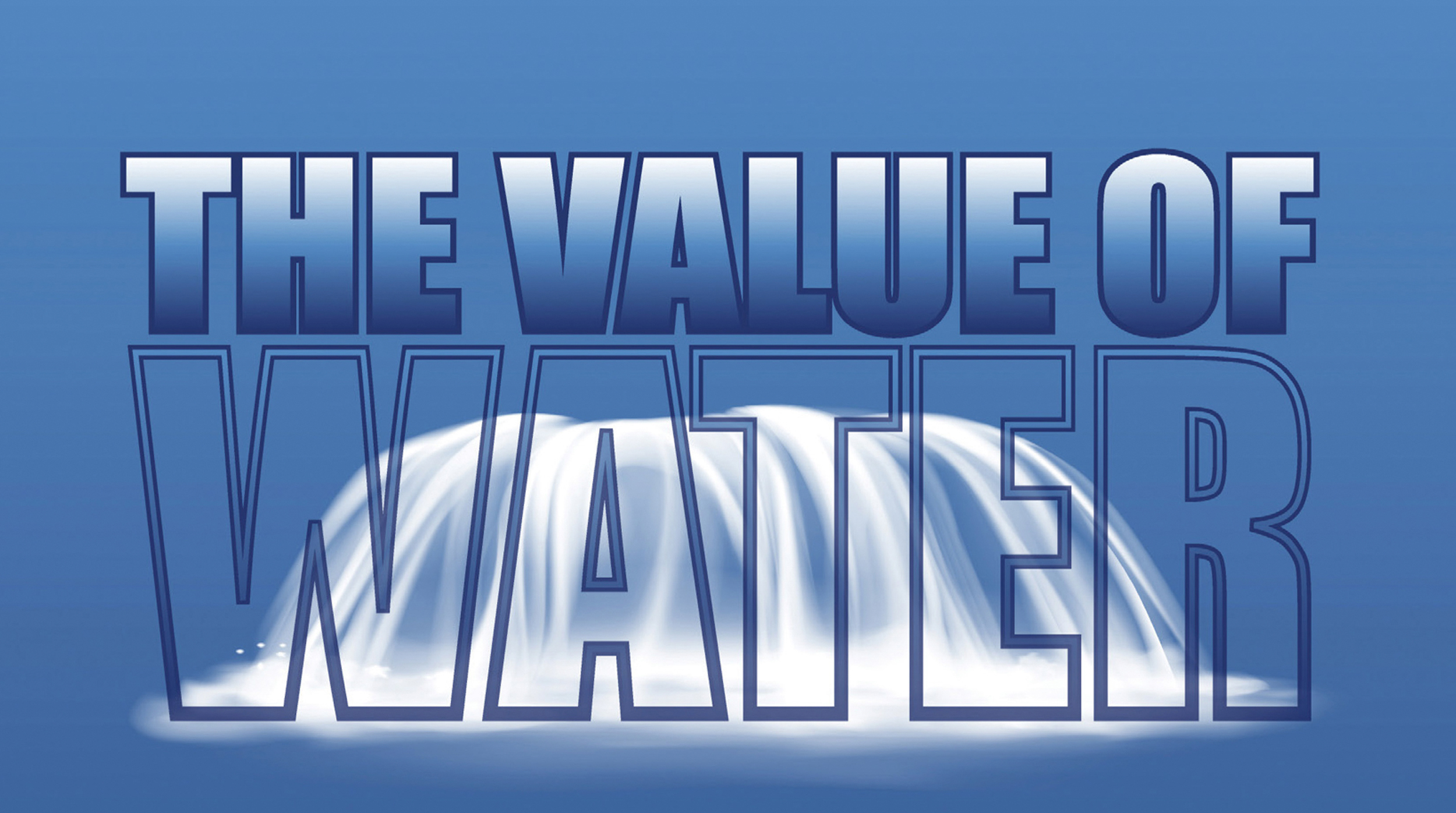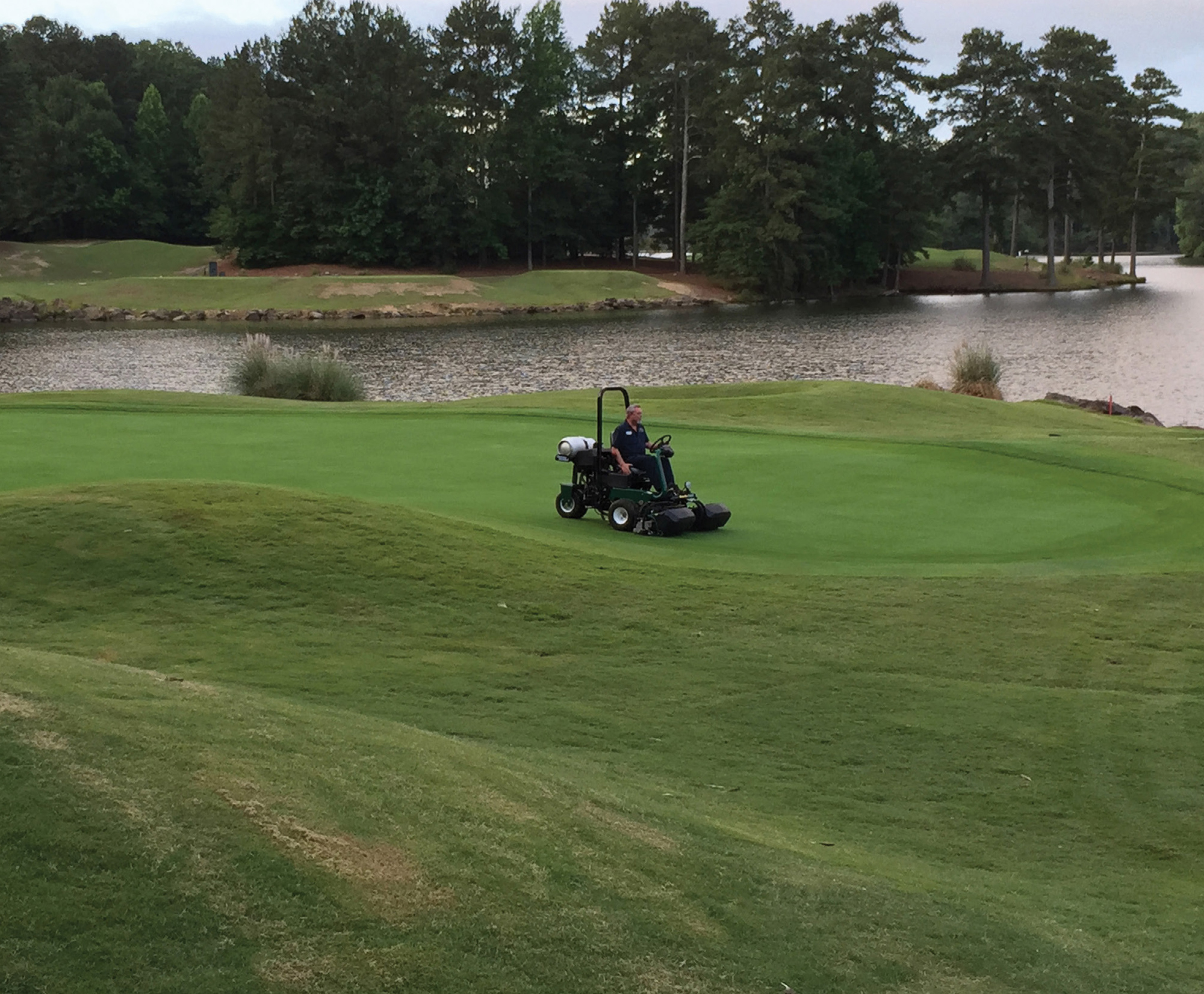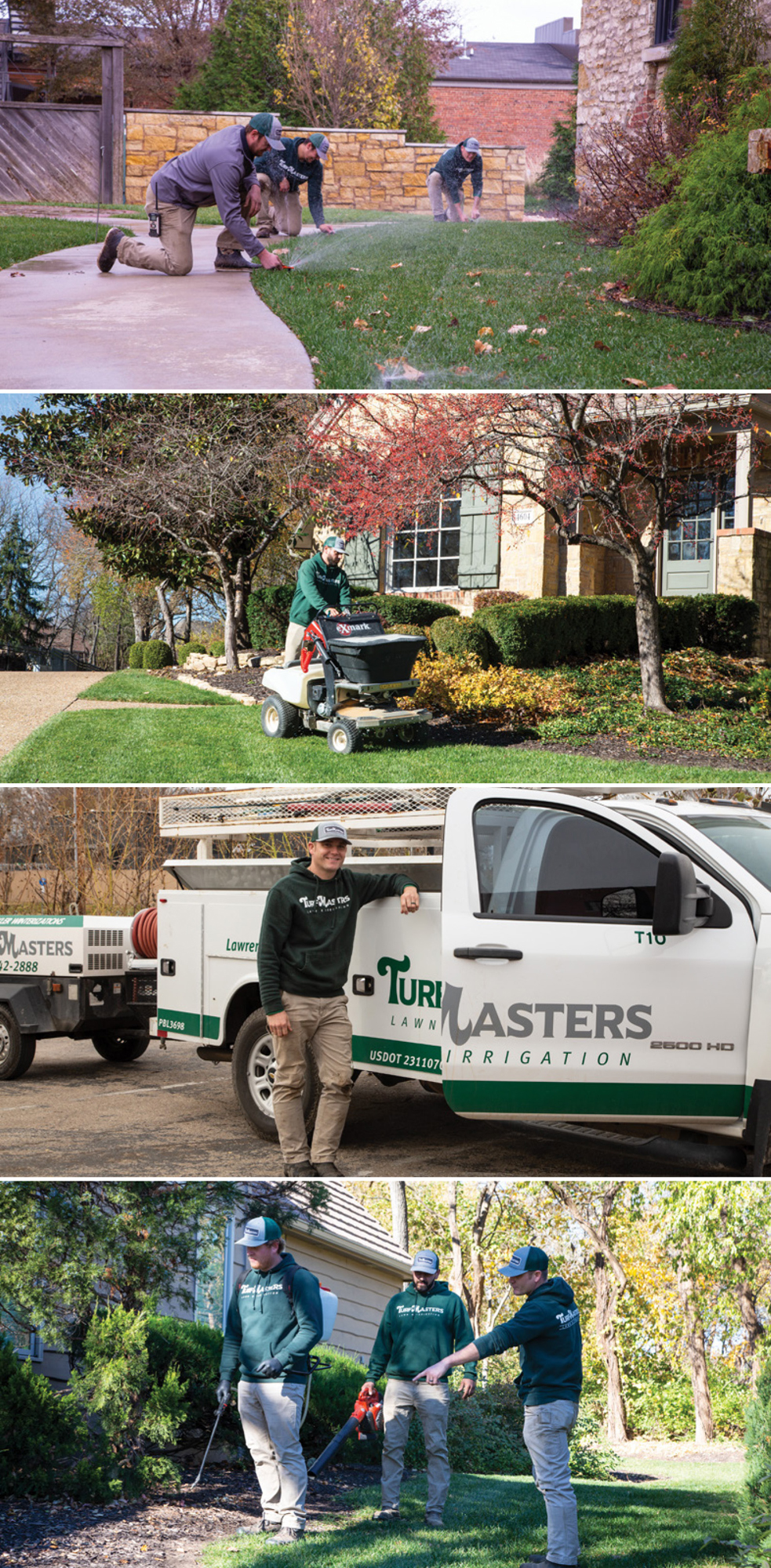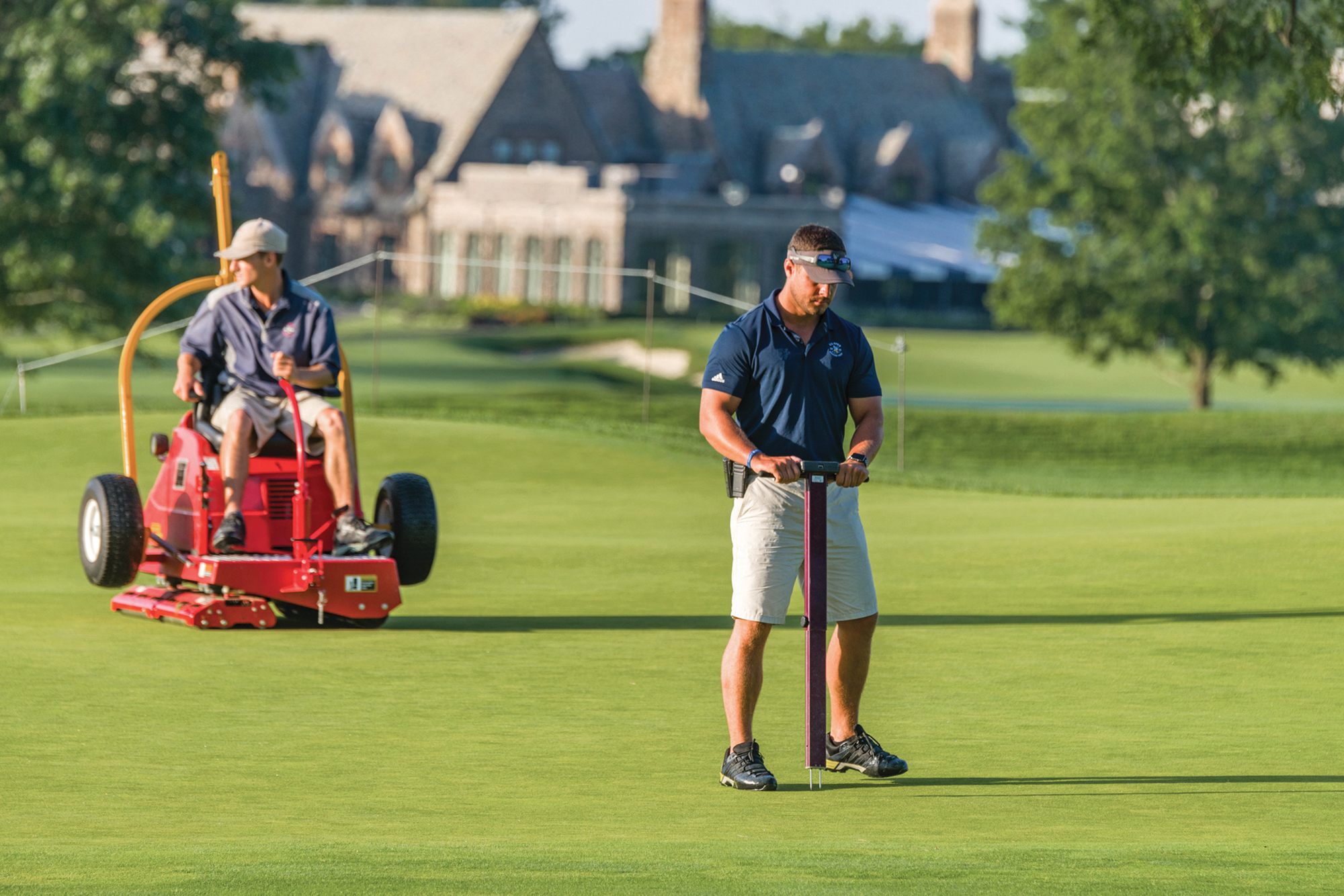| story by | |
| photos by | Steven Hertzog |
| OPEN A PDF OF THE ARTICLE |
In the ever-changing world today, it is essential that we take steps within our communities to preserve our natural resources, especially water.

The Value of Water
It’s no secret our world is changing. Earthquakes, extreme storms, flooding, fires and drought have become the new normal. With so much change afoot, it’s inevitable that the use of our natural resources must evolve, as well.
In the United States, water is an important part of our daily lives. Not only that, but ours is some of the safest water in the world. Every day, we wake up, drink some coffee or tea, shower, brush our teeth and start our day. Water use doesn’t cross most of our minds. But it is an integral part of every community. Without it, where would we be?
Essentials of Life
“Water is critically important to the health and welfare of our community, from being able to have clean water to drink, perform household cooking, washing and sanitation purposes,” explains Josh Carson, public information officer with the City of Lawrence Municipal Services and Operations department. Plus, “Most City projects use water in some form, from paving operations, concrete work, earth work, directional drilling, home construction or any type of building construction.”
The U.S. Environmental Protection Agency (EPA), whose purpose is to protect human health and the environment, notes on its website that without water, we’d have no local business or industry, no way to fight fires, no municipal parks or public swimming pools, no way to grow food or manufacture goods, no way to keep businesses running smoothly or to meet the nation’s vast energy needs.
Water on Earth might seem quite abundant to the untrained eye, the EPA site adds, but less than 1 percent is actually available for human use. The rest is either saltwater found in oceans, freshwater frozen in the polar ice caps or water that’s inaccessible for practical usage. While population and demand for freshwater resources increases, supply remains constant. The water cycle continuously returns water to Earth, but it’s not always to the same place, in the same quantity or of the same quality.

Green Mowing with pond in the background; Photo by Montana Pritchard
Play the Ball as It Lies
The average American family uses more than 300 gallons of water per day at home, according to studies by the EPA. About 70 percent is used indoors and 30 percent outdoors. Household water use can be much higher in drier parts of the country and in more water-intensive landscapes.
Some of those water-intensive landscapes include golf courses, which for years have had a reputation for being harmful to the environment and water guzzlers. While this perception is not entirely unfounded, golf courses have made great strides in becoming more environmentally responsible in recent years, according to Audubon International, whose mission is to create environmentally sustainable environments all across the globe where people live, work and play.
“The trends in building golf courses and in renovating golf courses are typically focused on sustainability,” explains Mark Johnson, associate director of environmental programs for the Golf Course Superintendents Association of America (GCSAA), the professional association for the men and women who manage and maintain the game’s most valuable resource: the golf course. He has worked for more than 30 years in outdoor recreation, environmental protection, wildlife and natural resource conservation, and provides leadership, direction and project management for the various environmental programs, tools and services at GCSAA. “There has been a reduction in maintained turf in nonplayable areas to conserve resources and reduce inputs. Design elements include innovative ways to capture water, the use of drought-tolerant grasses and native plants, and providing habitats for wildlife.”
Johnson disagrees with the idea that golf courses are harmful to the environment and deplete water resources without giving back. “Golf courses that implement science-based, best-management practices contribute valuable green space within their communities and watersheds,” he says. “A golf course is a managed ecosystem.”
“Golf courses are green spaces that also provide recreational and economic benefits to the communities they serve,” Johnson continues. “The majority of golf courses in the U.S. are not private clubs but public or daily-fee courses.”
The Devil’s in the Details

T to B: Jack Bell, owner of Turf Masters finishing installing new sprinkler system and adjusting the sprinkler heads to get them just right as to not waste water; Dustin Nye, Owner of Turf Masters seeding an existing lawn; Jack Bell standing by one of his trucks; Jack and Dustin consulting on an irrigation plan while Cody Stanclift sprays for invasive pests
The actual amount of water a golf course needs to sustain healthy turf growth depends on many variables, including the species of turf and the prevailing climate in a given area, according to the U.S. Golf Association (USGA), the governing body of golf for the U.S. and Mexico, which produces and interprets the rules of golf. “Scientific studies have determined that various turfgrasses require a specific percentage of the water that naturally evaporates from the soil and through the plants.”
Golf courses in cooler climates and high-rainfall areas can use less than 1 acre-foot (the amount of water covering a 1-acre area, roughly a football field, to a depth of 1 foot, which is equal to 325,851 gallons) of water per acre each year, according to the USGA website. Golf courses in hot, dry climates may require as much as 6 acre-feet of water per acre per year.
Water sources on golf courses include groundwater, surface water, reclaimed (recycled or effluent) and potable water. Only 8% use municipal water, and more than 15% use reclaimed water for irrigation, Johnson explains. “Many golf courses have been designed to collect water runoff from their community, and the runoff can be stored in ponds, wetlands and other environmentally friendly areas. The water is filtered as it crosses the golf course, and then many use it for irrigation. Others pump water from the ground or surface-water sources to fill irrigation ponds.”
Water is primarily used to irrigate the playing surfaces (greens, tees and fairways), he continues. Other landscapes like lawns or grassed courts may receive some irrigation. More than 15% use recycled/reclaimed water for irrigation.
Some common water-conservation practices include wetting agents, hand-watering, keeping turf drier, mulching landscape beds, irrigation scheduling, moisture meters and decreasing maintained turfgrass areas, Johnson says. Other efforts include using newer irrigation technologies and evapotranspiration rates, installing weather stations, establishing a water budget, using turfgrass varieties that use less water and transitioning to using recycled water.
When it comes to irrigation systems, he says they are highly maintained for efficiency and used in conjunction with weather stations, soil-moisture meters and conservation practices such as hand-watering on many golf courses. Overwatering is “bad for turfgrass and impacts play. Irrigation is limited on days when it rains or other precipitation provides adequate moisture for healthy roots and plants.”
Golf course turfgrass areas are credited for removing pollutants from water runoff (some golf courses are also designed to collect runoff from neighboring properties), erosion control, cooler temperatures and more, Johnson adds. “The out-of-play areas provide wildlife habitat, pollinator habitat, wildlife corridors and more … An average 18-hole golf course is approximately 150 acres, of which 95 are managed turf, along with 26 acres of natural/native areas.”
Golf course architects incorporate the native landscapes with as little disturbance as possible, using designs and materials to minimize impacts, ensure resource efficiency, minimize maintenance and allow for future innovation, he says. “There’s more to golf course design and construction than meets the eye. It’s about ensuring a valuable green space that is sustainable and beneficial to the communities they are in.”
The Nature of Things
As the U.S. struggles with water shortages because of climate impacts, the face of landscaping has had to follow suit. Changes in equipment, technology, computers and software have helped to modernize the world of landscaping.
Nationwide, landscape irrigation accounts for nearly a third of all residential water use, nearly 9 billion gallons per day, according to the EPA.
Outdoor water use varies depending upon geographic location. In drier climates, a household’s outdoor water use can be as high as 60 percent. Some experts estimate that as much as 50 percent of water used for irrigation is wasted due to evaporation, wind or runoff caused by inefficient irrigation methods and systems, EPA’s website explains.
“They [equipment and technology]are always evolving,” says Jack Bell, co-owner of Turf Masters, a locally owned and operated all-in-one lawn-care service that has served Lawrence and the surrounding areas since 1974. “For example, it was the norm to push-mow almost every single mowing account with a standard 21-inch mower back in the 70s and 80s. The 90s introduced the wide-area walk-behind (the ZTR) and the Stander mower. All have taken efficiencies through the roof.”
Lawn-treatment practices have also evolved from push spreaders to ride-on spreader/sprayers, which once again help efficiencies, he continues. “As far as irrigation is concerned, I would say the biggest advancement is the WiFi controller. Clients can now make any adjustment possible while sitting on their couch or on vacation in Florida.”
WiFi controllers can come equipped with soil and flow sensors, allowing the controller itself to sense if the soil is too wet or dry while learning what normal flow is supposed to be. If there is a leak when the system is off, the flow sensor will catch if water is passing by when it’s not supposed to. It will also sense if there is too much flow on any specific zone.
Drip irrigation is common for landscape beds. “The idea behind drip is for it to be covered by mulch or rock, and to water under the surface,” Bell explains. “This avoids evaporation. The downside to drip is it is a target for pests like squirrels. They will eat right through it. The other downfall is it’s much more difficult to see if it is working correctly or not.”
He says a properly designed irrigation system accurately irrigates its intended area and makes a system efficient, which is more effective than running your own hose sprinkler, because it is timed and monitored, precise and targeted.
Tricks of the Trade
On a daily basis, landscapers use quite a bit of water. “From the coffee maker in the mornings to the ice that goes into each crew’s water cooler in the afternoons. And, of course, all day long with our irrigation crews,” Bell says.
Turf Masters shoots for roughly 1 to 1½ inches of water a week. More than that typically isn’t necessary. “On top of that, it’s important to break it up into increments,” he continues. “There’s only so much water uptake a plant can produce. Once the ground is saturated, most of the rest will run off. So getting that 1 to 1½ inches in a matter of two or three waterings is best.”
The City of Lawrence has initiated a three-tier system that exclusively relates to irrigation. Currently, the prices are: Tier 1, $7.10 per 1,000 gallons; Tier 2, $7.81 per 1,000 gallons; and Tier 3, $8.17 per 1,000 gallons. “Commercial properties typically have dedicated water meters and are always charged the Tier 3 price since they are strictly for irrigation,” Bell says. “Commercial properties are also usually a lot bigger than your average residential. I’d say it’s safe to assume most commercial properties can easily triple these numbers. Once again, it’s all relative to size.”
Turf Masters advises its clients to turn their controllers off when they don’t need the water, usually a simple push of a button or turn of a dial. They also advise customers on how many times to water per week given the time of year and what time of the day is best. “The general rule of thumb is don’t water during daylight hours, the evaporation rate is too substantial,” Bell explains. “Think of the coolest part of a 24-hour day, that’s going to be between 3 and 6 a.m. This has the lowest evaporation rate and allows the water to soak in.”
Other tricks of the trade: Try to have all watering done before the sun comes up. Water longer, not shorter. Check your irrigation system three or four times a season, making sure you don’t have any leaks or broken heads. Mow at the proper height during dry months (don’t cut it too short). To prevent stress during hot and/or drought conditions, take the mower up a notch. Fertilize on a regular basis to help the grass establish a deep healthy root system. Install hardy perennials in landscape beds. “Every plant will need water when planted, but once perennials are established, they typically will not need much water,” Bell says. “They also only need to be trimmed once or twice a season. This is considered a low-maintenance approach.”
Most importantly, “Pay attention. It’s as simple as that,” Bell warns. “The absolute best way to irrigate is to be aware of the environment around you. Know when it rains. Know when it’s supposed to rain. Is it 100 degrees out? Are we in a drought? Do you need more water? Do you need less?”
In the grand scheme of things, there isn’t a perfect sprinkler head or controller that will be better than the human eye. “Know what your irrigation controller is set for, don’t just set it and forget it,” he adds. “Pay attention to how much rain we receive, and turn on/off your controller accordingly.”
As of right now, Bell says, there’s not a lot to deter landscapers from irrigating less here in the Midwest. However, “It’s a completely different story out west. I think it’s inevitable that those regulations will make their way here, the only question is when.”

Moisture Reader – Measures how much moisture is in the green so water isn’t wasted on areas that don’t need it. Photo by LC Lambrect/GCSAA
What’s Next?
The City of Lawrence is taking steps to promote conservation of water within the community, MSO’s Carson says. It has water-conservation requirements that go into effect during prolonged droughts. Also, implementation of Individual Inclining Block rates (rate structures where the system charges a higher price at larger volumes of water) will likely encourage residents to conserve water. And an Advanced Metering Infrastructure (an integrated system of equipment, communications and information-management systems for utilities) will automate reading data and eventually allow customers to check and monitor their usage in near real-time.
As the Centers Disease Control and Prevention reminds us, water is the most important resource for sustaining ecosystems, which provide life-supporting services for people, animals and plants. p
![]()




